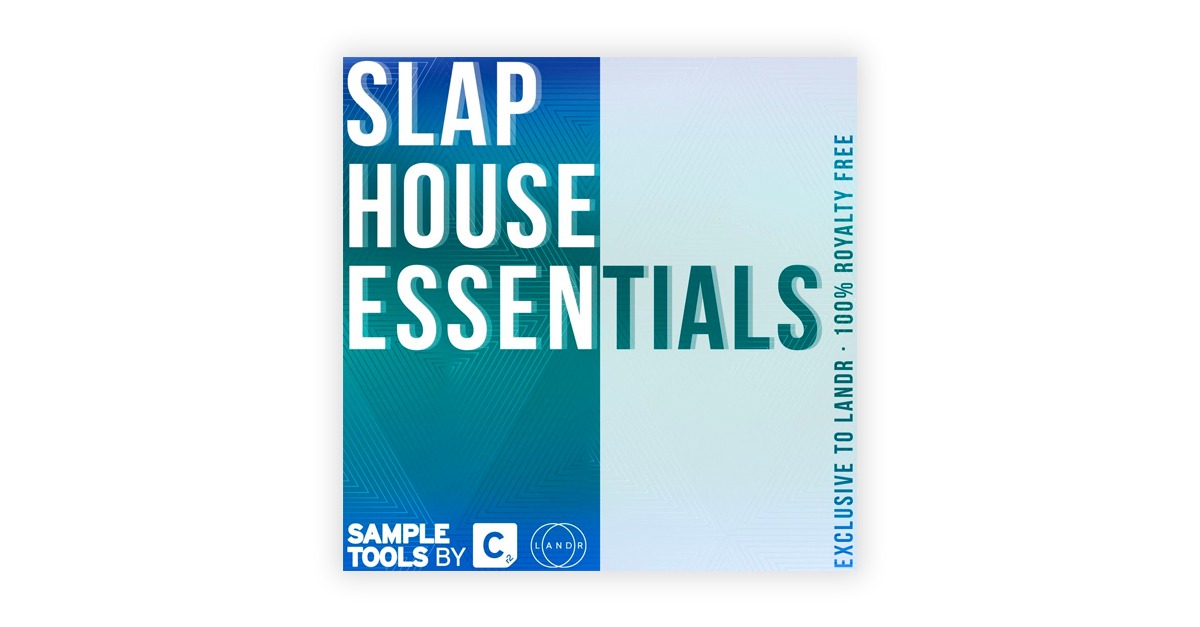
Slap House: 5 Tips for Making Your Own Slap House Track

If you love listening to house and EDM, you’ve probably encountered a Slap House track.
Lately, the genre has taken the music industry by storm, with many well-known artists and upcoming producers adapting their production to emulate the popular genre.
We’re excited about the new genre too!
We’ve even made a collection of free samples available from Slap House Elements exclusively on LANDR Samples.
It’s chock full of samples that are begging to be used in a slap house track.
Of course, it takes more than a handful of great samples to make a good slap house track.
There’s a few specific production techniques that most slap house producers use.
That’s why we had the creator of the new sample pack, Cr2, put together the top five production tips you need to know to help you nail your next slap house production!
1. Chop and screw the vocals
The thing that makes vocals so great is that there’s so many things you can do with them.
Pitching, stretching, chopping, distorting, layering and beyond.
Vocals are an important aspect of any slap house track. In this genre, they tend to have a distinct style.
Of course, it takes more than a handful of great samples to make a good slap house track.
Often you’ll hear the vocals slightly (or sometimes heavily) pitched up or down and maybe they’ll have some kind of transformation on the formant.
There’s a few ways to get this cool effect on your vocals.
One way is to simply use a vocal plugin that allows you to easily change the pitch and formant of the vocal.
You usually don’t want to make the pitch or formant change too drastic, as this can cause the quality of the vocal to deteriorate.
Play it by ear, and you’ll be fine.
If you don’t want to use plugins, a cool technique you can try is to record the vocal two or three semi-tones higher than the actual key of the song.
Then once it’s recorded, pitch the vocal down to the original key.
It’s a subtle way of changing the formant and pitch without any plugins and it will sound more natural.
2. Be intentional about your buildups
Many producers make the mistake of rushing their buildups and not giving them the attention they deserve.
It’s not enough to just add snare rolls and a couple of risers.
It’s not enough to just add snare rolls and a couple of risers.
In reality, buildups are actually one of the most important parts of any production—they prepare the listener for the main section of the track.
A strong and effective build-up can really help the chorus or drop have more impact.
Gradually filtering out the low frequencies towards the end of the build-up is another way to make the drop sound bigger, especially in Slap House where the bass is the main driving force.
Keeping some of the elements in mono during the buildup and then back to stereo in the drop will also help make the drop sound more impactful to the listener.
3. Keep the rhythm going
Rhythm is an important part of any Slap House track. It’s the rhythmic elements like the drums and especially the thump of the bass that drives the track.
Getting the rhythm of your bass right is vital to making your track work. Using syncopated notes is a great way to bring some groove into your bass lines.
Most DAW’s have a built-in swing function that helps you get that funky rhythm, but you can also manually do it by nudging some of the notes slightly off-grid.
Also, make sure to keep some space between some of the notes in your bassline to allow the track to breathe.
The drop section should feel like a car flying off a cliff— there’s should still be rhythm in the high end but don’t drown out the moment with too many fast-paced bass hits.
4. Use Reese bass
Nowadays, Reese basses have become a very popular element to use in any genre, but especially in Slap house.
They sound thick, deep, and they fill up the track nicely while providing a lovely dark, slightly mysterious vibe.
Reese basses sound thick, deep, and they fill up the track nicely.
The key to attaining a good Reese bass is layering.
One way to layer it in is by adding a low cut at around 120Hz on the main Reese and then add a thick sub underneath.
This gives you more control over the sub and adds more power to your overall bass sound.
Now for the mids to high-mids, layer the Reese bass with a low-passed pad, to add some depth and width.
This will give you an amazingly rich sound and will provide you with a nice bed for the vocals and other elements.
5. Remember to use percussive kicks
The one element which stands out most in Slap House is the distinct short percussive kick sound that is used during the drops.
To get this specific type of sound you must select a bass with a quick attack and a short decay. You’ll want to have an envelope on the filter which emulates the same shape as your main volume ADSR too.
You can flick through presets until you find a nice sound or you could design your own kick using subtractive synthesis or FM synthesis.
Next, layer your main kick sound with sub-bass to add some low-end power.
Finally, to really get that punchy percussive sound on the bass, try to layer some type of percussive hit that follows the notes of the bassline.
A hollow sound usually gives the best result, but in music, it never hurts to experiment and try some new things.
Especially with Slap House becoming quite saturated, it’s always good to strive for unique sounds wherever you can in your productions.
Gear guides, tips, tutorials, inspiration and more—delivered weekly.
Keep up with the LANDR Blog.




